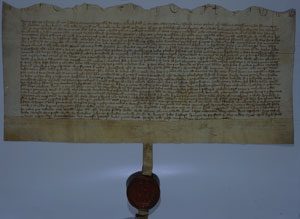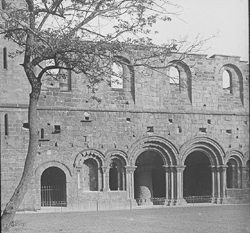 |
 |
 |
 |
 |
 |
 |
|
(2/2)
Notable visitors, such as royalty and prelates, were received by the community in the chapter-house,(4) and it was here that those conducting a visitation of the abbey would have read out their injunctions. Benefactors might formalise their grants here or be received into the confraternity of the house,(5) and it was in the chapter-house at Kirkstall – as at other religious houses in England and Wales – that the community gathered for the last time and surrendered their abbey to Henry VIII’s commissioners. Whilst the chapter-house was the setting for the public correction of those who transgressed the rules, it was also used for private confession when the monks confessed wrongful thoughts or feelings such as anger, laziness or jealousy.
The chapter-house at Kirkstall was unusual, for it consisted of two square rooms and was accessed by two doorways. Whereas the western room (outer) dates from the late twelfth century and is Norman in design, the eastern, or inner, room was rebuilt in the thirteenth century and is Gothic in style. It was common for abbots to be buried in chapter-houses, but the incorporation of stone coffins within the walls of the eastern half of the chapter-house at Kirkstall is exceptional.
|
||||

